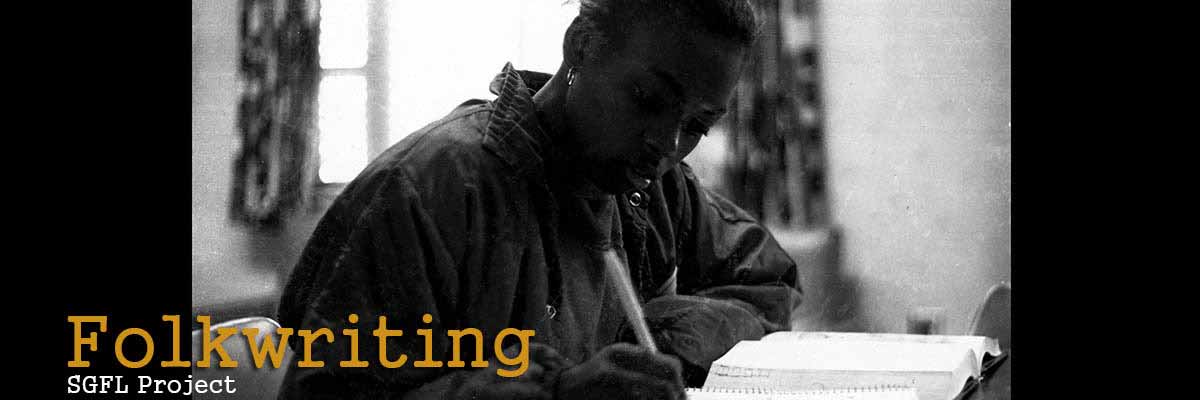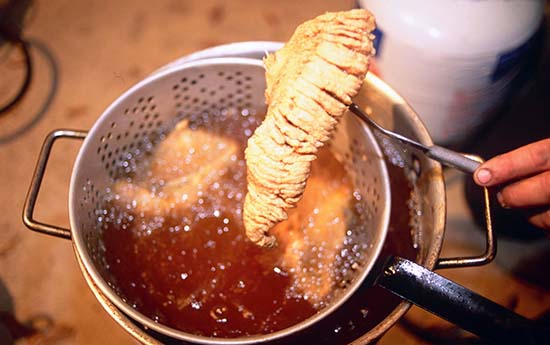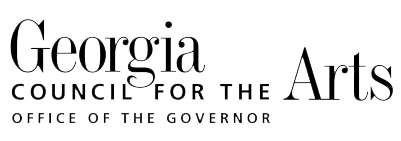
Writing About Our Community: Classroom Activities Based on Folklife of the Georgia Wiregrass Exhibit

A. Grade Levels: Grade 4 and up.
B. Curriculum Areas or Disciplines: Language Arts and Social Studies
C. Time Required: at least two class periods
D. Purpose of the Lesson: To integrate skills in the writing process with viewing the online Folklife of the Georgia Wiregrass exhibition, connect students to the culture of their region and community, and use this personal connection as the basis for a writing assignment. Students write best when they write about what they know!
E. Content Standards
- Language Arts
Writing: Communicates ideas by using the writing process
- Prewriting
- Drafting
- Revising
- Editing
- Publishing
F. Rationale: Why combine folklife and writing?
Pedagogical studies on the reading-writing connection and teaching literacy skills repeatedly show that students write best when they write about what they know. "What they know" is the environment, people, places, and events of their lives. The term "folklife," or living traditions of their families and communities, captures what they know. Folklife brings together a body of information--including narratives, songs, customs, beliefs, crafts, and foodways--that are at the heart of culture and define an individual's and a community's sense of place and identity. Folklife as an instructional tool can be used at any grade level, in all disciplines, and with all types of learners.
This kind of activity is student-centered. Students construct meaning as they write about what they know. "It is important for young people to learn that culture, history, art, and music are not just created by historical figures, famous people, or those living in other places. Culture is created in everyday life by all of us in our various communities, whether in our families, our schools, our neighborhoods, or in ethnic, occupational, or other kinds of groups. [Teachers can] illuminate and expand classroom instruction with real-world experiences and connect students to their communities' in ways that capture students' attention, enrich their learning experience, and improve essential reading, research, communications, and writing skills. In addition, students will be contributing to understanding and sharing the culture and traditions of their communities" (Explore Your Community Poster, American Folklife Center and the Rural School and Community Trust, 2001).
As the nation becomes increasingly diverse, folklife provides a vehicle for developing local multicultural resources that reflect the traditions of all members of the community. A growing number of lesson plans and instructional units focus on folklife and community-centered and place-based learning, among them the "Louisiana Voices" on-line folk arts and folklife curriculum (www.louisianavoices.org); "Writing the Essay of Place" from the Montana Heritage Project (www.edheritage.org); and Student Worlds Student Words, Teaching Writing Through Folklore (Elizabeth Radin Simons). A recent example from Georgia is Sandra Worsham's Everybody has a Story to Tell that engages at-risk students in collecting and publishing the stories of community members in Milledgeville. See also the Folkwriting link on this website.
What is folklife? Folklife, also called folklore, describes LIVING TRADITIONS, passed on informally as part of everyday life. These are the traditions which help to define who we are: a stick tobacco barn; Watch Night in African American churches, family reunions, nicknames, a recipe handed down in the family, a fish story of the big one that got away, the songs you learned by ear and sing around a campfire. Folklife is shared by persons with common backgrounds or interests. Although folk traditions vary from place to place and from group to group, they help us feel a part of a group. When we belong to a group, we learn the traditions of the group from other members. We may be members of folk groups based on a shared geography (region, place, home town), religion, ethnicity, place of work or occupation, interest or hobby, school, or even a shared stage of life, such as children's hand clapping games or graduation parties. Folklife takes many forms: customs, food, stories, jokes, songs, sayings, beliefs, games, art, home remedies, architecture, dance, work-related skills, crafts, drama, celebrations, and architecture, among others.
About the exhibit: The Folklife of the Georgia Wiregrass exhibit focuses on community culture of South Georgia. The term "Wiregrass Georgia" is the historic name for the region. As explained in the opening panel of the exhibit, early European settlers called this distinctive area "Wiregrass Country" after the lush native grass that grew beneath stands of longleaf pine. Pioneer farmers learned from Native Americans that wiregrass grew best when it was regularly burned. Yearly wintertime burns assured farmers of a thick natural pasture for free-ranging livestock. The early economy also tapped the piney woods for the production of naval stores such as turpentine. Today the vast expanse of wiregrass is gone; biologists seek new ways to restore native ecosystems through reseeding and controlled burns. And in the collective memory of South Georgians, wiregrass remains an important symbol of place and identity.
The exhibition contains panels with photographs, captions, and informational labels that expose students to the traditions and heritage of South Georgia. The photos show special occasions and everyday events from the 1960s to the present. Most of the black and white photographs were taken in 1977 by a group of folklorists from the American Folklife Center at the Library of Congress in cooperation with the Arts Experiment Station in Tifton. These photos became part of a traveling exhibit that toured the region in the late 1980s. Dr. Laurie Sommers, a folklorist with the South Georgia Folklife Project at Valdosta State University, added new panels that show continuity and change in local traditions. Funds to tour this new combined version of the exhibit come from the Georgia Humanities Council and the National Endowment for the Arts.
The exhibit is divided into three sections, and presents folklife associated with each:
-
Of Farms and Farming (tobacco harvest, tobacco auction, picking and selling peanuts, a folk painting of cotton harvest, making cane syrup, a ham and egg show, country ham, lbeekeeping, migrant workers sorting peaches)
-
Of Community Art and Life (community festivals, local BBQ places, fiddle playing, homemade toys, country stores and ethnic markets, traditional breads and biscuits, homemade jams and jellies, traditional architecture, quilts, white oak baskets, traditional watercraft, handmade fishing boats, fish fries, hunting traditions)
-
Of Church and Sacred Life (gospel singing, sacred harp singing, dinner on the grounds, river baptism, Jewish bar mitzvah, Hispanic Catholic saints day celebration, rural church buildings)
H. Activities
-
Activity 1 (preparation): Students will follow the writing process and write paragraphs or essays based on the instructions on the Power Point handouts for "A Food Tradition," "A Homemade Toy," and "A Work Experience". The teacher may use one of these slides and model the writing process for the students and assign one or both of the other slides for the students to complete.
-
Activity 2 (Folklife of the Georgia Wiregrass Treasure Hunt): Students will visit the Folklife of the Georgia Wiregrass online exhibit, using the Treasure Hunt worksheet. They will find particular items pictured in the exhibit, and then write a descriptive answer to the questions posed on the worksheet. Each teacher will determine the number of questions assigned and the kind of writing (descriptive paragraphs, etc.). Encourage students to use sensory description and details. The questions connect the students' own experiences with the traditions pictured in the exhibit. The written responses will form the basis for the writing activity to be completed after the students return to the classroom.
-
Activity 3: (Classroom writing activity based on exhibit viewing). Each teacher will determine the nature of this assignment, based on the level of students involved. For example, activities may range from I Am From poems to paragraphs to essays.
I. Resources:
See the link for Folkwriting: Lessons on Place, Heritage, and Tradition
A LIST OF FOLKLIFE SCENES FEATURED IN THE EXHIBIT
- Tobacco Harvest
- Tobacco Auction
- Picking Peanuts
- Old Time Cotton Harvest (painting)
- Country Stores
- Ethnic Markets
- Community Festivals
- Fish Fries
- Fishing
- Homemade Toys (sling Shots)
- Quilts And White Oak Baskets
- Fiddle Playing
- Religious Singing
- Making Busquits, Tortillas, And Frybread
- Country Ham
- Making Cane Syrup
- Gathering Locally Made Honey From Hives
- Agricultural Fairs/ham And Egg Shows
- Roadside Stands/boiled Peanuts
- Rites Of Passage (jewish Bar Mitzvah At Fitzgerald Hebrew Congregation)
- Traditional Buidings: Saddle Notched Log House, Shotgun, Dogtrot, Churches, Tobacco Barns
- Turpentining
- Wiregrass And Longleaf Pine
- Migrant Workers Grading Peaches
- Eating Locally Grown Fruits And Vegetables
- Making Jelly And Preserves From Local Fruits
- Dinner On The Grounds
- Local Bbq Places
- Hunting And Hunting Stories
- River Baptism
The Writing Classroom: Testimony from a Veteran Writing Teacher
I have been teaching writing the past thirty years; however, I did not know how to teach writing until four years ago when I was first introduced to the writing theory texts of Peter Elbow, Donald Murray, Linda Flower, William Zinsser, and others who give more than lip service to the writing process. In their books and articles, these writing practitioners give detailed accounts of the steps of the writing process, complete with student work to illustrate the writing stages. When I began emphasizing the stages or steps of the writing process to my students, I became a writing teacher and not simply a teacher who taught writing. There's a difference.
I realized this difference recently when I had the privilege of leading a reading and writing workshop for middle school teachers. A math teacher in this group had been one of my students in a high school composition class twenty years ago. Throughout the week long workshop, I kept apologizing for the "error of my ways" of teaching when I sternly gave cold, canned, packaged writing assignments to her and her peers. I was a product oriented teacher of writing.
Now, I am a process oriented writing teacher. No longer giving a writing assignment topic and collecting the five-paragraph essay product in 60 minutes, I now give a writing prompt, model the stages of writing process, and collect the written piece several days or even weeks later. I am teaching students how to write not punishing them for not producing a "good" essay on the spot.
With my new found approach to teaching writing, I no longer struggle to find just the right reader for my students. If I am to focus on teaching them how to write, I should not spend class time or their study time, for that matter, on reading an essay or story emphasizing my views or opinions. After all, the intent of a first year composition course is to teach students about writing, not about abortion, gun control, euthanasia, global warming, or even education reform. The intent of the course is to teach students how to be better writers and better thinkers, not to tell them what to think. Writing teachers should not brainwash their students.
Hence, my primary goal became teaching the writing process by establishing an environment to stimulate students to think and to engage in the steps need to produce an essay, poem, play, newspaper article, advertisement, or document paper. I let the students write about what they knew and what they cared about: themselves and their families, friends, and neighbors. By not devoting precious class time to teaching a story or poem, I could show them how to write. I could model. Yes, I could write and show them how to write. What an idea!
With each writing unit, I would begin with class time to prepare for writing in the pre-writing stage. Sometime I would play music to set a tone or mood. Other times I would use smells to prompt the students to remember. Frying bacon in an electric skillet is a great pre-writing activity to help the students think about breakfast and an early morning event in their lives. Other times I have them close their eyes and take them to a place in their past as I talk to them softly about walking into a house, looking around the room, seeing a person, listening to that person, and replying to that person. Even one word focused writing prompt for a fast-writing free writing is a helpful pre-writing activity.
Once the students have selected a topic during or following the pre-writing stage, they write a first draft, a "shitty first draft" as Anne Lamott calls it. I like using Lamott's description because my students know I am not disappointed when their first attempts on paper stink to high heaven. They know these are only beginnings and they are willing to take risks and experiment with something new as they begin the essay or poem or whatever genre they have chosen. I, too, write a first draft from the topic of my pre-writing activity.
Writing with my students accomplishes two things: it gives them a model of a person writing and an actual model of the stages of the writing process; it gives me a greater understanding of what writing is all about. I can identify with their anxieties, their fears, their frustrations, and their celebrations. It is amazing how much I have learned about teaching writing from my students and from being a writer with my students.
Once we have written shitty first drafts, we have something to revise. I like to teach revision in two stages. The first stage is for reshaping the piece; the second is for giving more details and for sentence and word revision. To reshape their pieces, students re-read their drafts, asking tough questions about the beginning, the development of the paragraphs, and the ending. The order they present the ideas as well as the development of the ideas is important. A piece must be a complete unit.
Once the piece holds together as a unit, it must be fine-tuned. Each sentence and each word needs to be considered for its appropriateness. If details are omitted, they must be added. The flow and the sound of the words are important and an oral reading is important to hear the language of the piece.
After writing revisions, my students are ready to edit the pieces. Peer and self editing are helpful to most students. This is the time in teaching the writing process that I have grammar and punctuation mini-lessons. I have found that when I teach a grammatical concept and give an example of correcting an error such as a pronoun-antecedent agreement error then have the students look at their own revisions for pronoun-antecedent agreement, they can spot errors in their own writing. My goal is to have them locate and correct errors on their own first and then to avoid making these errors in the future. Spotting errors and counting off points are not my goals.
The final and most exciting stage is the publishing stage. This stage can take a variety of forms: a handwritten or printed piece submitted to me or read to the class; a piece uploaded on a web page; a piece submitted to and printed in a newspaper or other publication; a piece printed in collection or anthology; a poster or wall hanging; or any piece presented for an audience. Publishing is simply the act of presenting their work to an audience. Since I have been teaching the writing process and writing with my students, I have gained a new zeal for teaching. This lesson uses folklife as the subject in the writing classroom with writing process in mind.
Diane W. Howard, Instructor of English, Valdosta State University
Prewriting Activities

These handmade toys, a race car, a gun, and sling shots, are carved out of wood. Do you have any toys made by a friend or relative? Or have you made toys yourself, such as paper airplanes or kites? Write about a handmade toy you have or someone you know has.

This is a painting by Curtis Everette of gathering pecans. Many students who live on farms help gather crops such as peanuts, cotton, tobacco, or pecans. Students who do not live on farms may work around the house, in the yard, or in the community. Write about a work experience you have had, focusing on the things you learned from experience or by watching someone else. Are there certain tools, clothes, words, or customs associated with this job? How did you learn?

A fish fry is one example of a local food tradition, here with suckers from the Flint River in southwest Georgia. Write about a local food custom or tradition you have enjoyed with your family or some other group. Include as much description and detail as you can. Use all five senses!
Treasure Hunt
| Exhibit Treasure Hunt | Folklife of Wiregrass Georgia |
|---|---|
| Find these things in the exhibit! | Write about what you find! Include as much description and detail as you can. Use all five senses! |
| 1. Wiregrass and longleaf pine. What did pioneer farmers use wiregrass for? | Much of South Georgia once looked like this. Tell about the landscape of your favorite place in the county. |
| 2. Man bagging up boiled peanuts. What is the name of the peanut stand? | Tell about a locally grown food that you eat or harvest at a certain season of the year. |
| 3. A "catface" on a tree. Catfaces were cut in the tree as part of what important South Georgia industry? | Describe a product or crop that is important to the economy of your town, county, or state. |
| 4. Rutha Harris singing "freedom songs" in a church. What is this church in Albany, Georgia used for today? | Is there a song with lyrics that inspire you? Tell about a special or favorite song in your life. |
| 5. Fitzgerald Hebrew Congregation. What special occasion is being celebrated in this picture? | Tell about something you do to celebrate birthdays. |
| 6. Chinese New Year. What is the purpose of the dance in this picture? | Many different cultures celebrate New Year. Tell about something you do every year at New Year. |
| 7. Contest sawing logs. This contest is part of what festival in what South Georgia town? | Tell about a festival in your town or county. |
| 8. Sign for a BBQ place. According to the text, what role do local restaurants play in the community? | Describe a local restaurant. What does it look like? Who goes there? |
| 9. Basket. What is this made out of? | Describe a special object that someone has made by hand (this could be something pictured in the exhibit or something you have seen in person). |
| 10. Fiddle. In this picture, Arthur Griffin strikes the fiddle strings to add some rhythm to the tune. What does he use to strike the strings? | Tell about a time when you heard live music performed in your town or county. |


